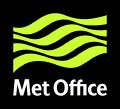Dataset
Physical Marine Climate Projections for the North West European Shelf Seas: PDCtrl
Abstract
A 200-year present-day control simulation (for the year 2000) has been downscaled with the shelf seas climate version of the Nucleus for European Modelling of the Ocean (NEMO) Coastal Ocean model (CO6), and we refer to the downscaled present-day control simulation as PDCtrl. The Met Office Global Coupled model version 3.05 (HadGEM3-GC3.05) was run for 200 years with the atmospheric constituents fixed to the values of the year 2000. The present-day control simulation provides an estimate of the unforced internal variability in the climate system that can arise in the absence of time-varying external forcings. The PDCtrl simulation was performed as part of the United Kingdom’s Climate Projections of 2018 (UKCP18) with full details available in Tinker et al. (2020). CO6 was run at a 7 km resolution, with 51 vertical levels using s-coordinates. This data collection includes 2D fields of monthly mean output for the full period, as well as regional mean time series for the full 200 year period.
NEMO has three model grids, the T, U and V grids, and we output variables in three files, respecting their native model grid. In practice, all our variables are on the T grid, apart from the Eastward and Northward components of the depth mean velocities (DMU, DMV), which are in the U and V grid files respectively. The T grid files have Sea Surface, Near Bed, and the Difference between the surface and bed Temperature and Salinity (SST, NBT, DFT, SSS, NBS, DFS), Potential Energy Anomaly (PEA), Mixed Layer Depth (MLD), the barotropic current magnitude interpolated onto the T grid (DMUV).
Details
| Previous Info: |
2025-12-09 This dataset is temporarily unavailable for download from the CEDA archive. We are working on restoring access. Please see our … Show More 2025-12-09 This dataset is temporarily unavailable for download from the CEDA archive. We are working on restoring access. Please see our latest news items for updates. - if you require access to this data in the meantime then please contact the CEDA helpdesk. Show Less |
|---|---|
| Previously used record identifiers: |
No related previous identifiers.
|
| Access rules: |
Public data: access to these data is available to both registered and non-registered users.
Use of these data is covered by the following licence(s): https://artefacts.ceda.ac.uk/licences/missing_licence.pdf When using these data you must cite them correctly using the citation given on the CEDA Data Catalogue record. |
| Data lineage: |
The UKCP18 HadGEM3 GC3.05 Present Day Control Simulation was dynamically downscaled with shelf seas climate version of NEMO 3.6 (CO6) to give a set of climate projections. |
| Data Quality: |
The data have been thoroughly evaluated against observational data, including comparisons of the Sea Surface Temperature (SST) to the OSTIA analysis (Roberts-Jones et al. (2012) http://dx.doi.org/10.1175/JCLI-D-11-00648.1); the surface and bed temperatures (SST, NBT) and sea surface salinity (SSS) to the quality controlled EN4 profile dataset (Good et al. (2013) https://doi.org/doi:10.1002/2013JC009067); and the sea surface height to satellite altimetry products (Rio et al. (2014) https://doi.org/doi:10.1002/2014GL061773; Legeais et al. (2018) https://doi.org/10.5194/essd-10-281-2018), and tide gauge records (PSMSL, Holgate et al. (2013) https://doi.org/10.2112/JCOASTRES-D-12-00175.1). The evaluation of the PDCtrl dataset has been published in Tinker et al. (2020) - see 'Related Documents'.
|
| File Format: |
Data are provided in NetCDF format.
|
Related Documents
Process overview
| Title | NEMO Shelf Coastal Ocean Model 6 (CO6) based on NEMO3.6 |
| Abstract | The shelf seas model used in these climate projections is available on github: |
| Input Description | None |
| Output Description | None |
| Software Reference | None |
- units: m/s
- var_id: DMUV
- long_name: Barotropic current speed on T grid
- units: 1e-3
- var_id: DFS
- long_name: Difference between Sea Surface and Near Bed Salinity
- units: degC
- var_id: DFT
- long_name: Difference between Sea Surface and Near Bed Temperature
- units: m/s
- var_id: DMU
- long_name: Eastward Ocean Barotropic current
- units: m
- standard_name: ocean_mixed_layer_thickness
- var_id: MLD
- long_name: Mixed Layer Depth using the Kara approach
- units: 1e-3
- var_id: NBS
- long_name: Near Bed Salinity
- units: degC
- var_id: NBT
- long_name: Near Bed Temperature
- units: m/s
- var_id: DMV
- long_name: Northward Ocean Barotropic current
- var_id: PEA
- units: J/m3
- long_name: Potential Energy Anomaly
- units: 1
- var_id: reg_id
- long_name: Region ID number
- units: 1
- var_id: mask
- long_name: Region Mask
- units: 1e-3
- var_id: RegAveDFS
- long_name: Regional Mean Difference between Sea Surface and Near Bed Salinity
- units: degC
- var_id: RegAveDFT
- long_name: Regional Mean Difference between Sea Surface and Near Bed Temperature
- units: 1e-3
- var_id: RegAveNBS
- long_name: Regional Mean Near Bed Salinity
- units: degC
- var_id: RegAveNBT
- long_name: Regional Mean Near Bed Temperature
- units: J/m3
- var_id: RegAvePEA
- long_name: Regional Mean Potential Energy Anomaly
- units: m
- var_id: RegAveSSH
- long_name: Regional Mean Sea Surface Height above Geoid
- units: 1e-3
- var_id: RegAveSSS
- long_name: Regional Mean Sea Surface Salinity
- units: degC
- var_id: RegAveSST
- long_name: Regional Mean Sea Surface Temperature
- units: 1
- var_id: cnt
- long_name: Regional count - number of grid boxes in region
- units: m
- var_id: SSH
- standard_name: sea_surface_height_above_geoid
- long_name: Sea Surface Height above Geoid
- units: 1e-3
- long_name: Sea Surface Salinity
- var_id: SSS
- units: degC
- standard_name: sea_surface_temperature
- var_id: SST
- long_name: Sea Surface Temperature
- var_id: time
- units: seconds
- long_name: Time axis
- var_id: time_bounds
Co-ordinate Variables
- units: degrees_north
- standard_name: latitude
- var_id: lat
- long_name: Latitude
- units: degrees_east
- standard_name: longitude
- var_id: lon
- long_name: Longitude
Temporal Range
1990-01-01T00:00:00
2099-01-01T23:59:59
Geographic Extent
65.0013° |
||
-19.8889° |
13.0000° |
|
40.0667° |

